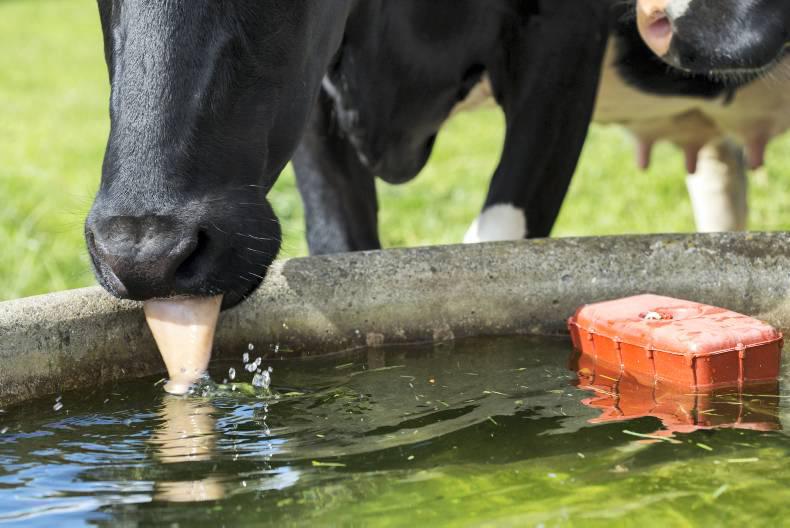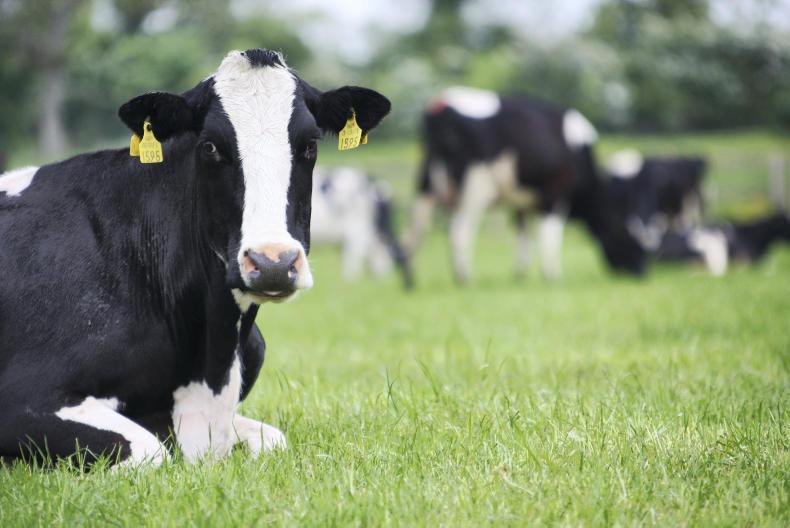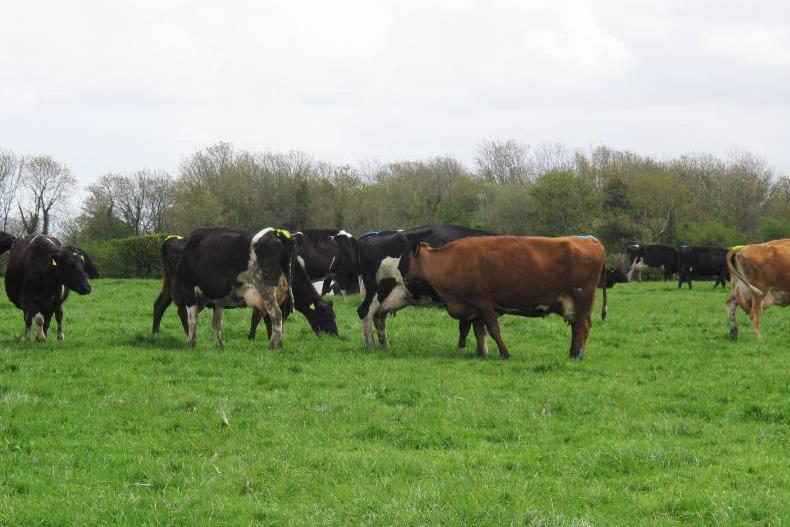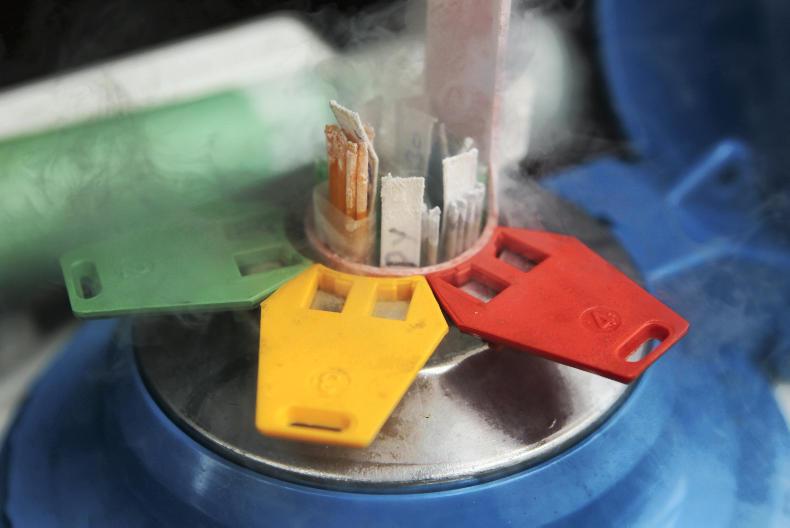With many farmers now looking to low-cost systems, reducing or eliminating meal is one of the first steps. With the majority of minerals and supplements on many farms fed through feed, increased risks of mineral deficiencies arise.
One of the most effective methods of feeding vitamins and minerals is through the water system, as dairy cows drink 100 litres a day on average, while beef cattle drink approximately 70 litres.
For this reason, many dairy and beef farms are going down the road of liquid mineral-dispensing units. Last week, while attending the Moorepark open day, I saw one such system, which Terra Liquid Minerals, part of Terra Services, had installed just six weeks ago after a successful two years in the Next Generation herd.
Farm manager Rickie Fitzgerald was happy with how it had worked in the Next Generation herd.
“It gives great peace of mind that when you cut back on feed, the cattle are still being taken care of with regards to minerals. The system works well and the cows have never looked better,” said Rickie.
Terra Services claims that to achieve high levels of milk production, maintain cow health and reproductive performance, meeting the mineral and vitamin needs of cattle is essential.
With liquid minerals, the availability for absorption is far greater than minerals fed in dry format, with figures ranging from 75% to 95%.
Padraig Hennessy from Terra Services believes that the system has a number of advantages. “All of our dairy and beef clients are seeing benefits, such as easier calving and healthier calves born, as well as a significant reduction or elimination of milk fever, grass tetany and retained placentas,” explained Padraig.
Picture 1
Here we see a simplified diagram of how the whole system works. The controller is hooked up to a water meter, which measures flow rate to allow for adequate amounts of minerals to be added. Once programmed to the correct number of cows, the injector pumps will then add rationed amounts of minerals to the pipeline before flowing into troughs. This is a fully automated system once cattle numbers are programmed in.
Picture 2
A number of different minerals can be added from the one system. In this picture, we see three drums connected to one controller.
Minerals, magnesium and bloat are injected separately for greater efficiency and precision throughout the year.
Minerals cost 5c to 6c/cow/day, which covers copper, selenium, cobalt, iodine, zinc and vitamin trace elements.
Magnesium costs 2c to 10c/cow/day, depending on the time of year, while the bloat mix is around 6c to 14c/cow/day.
At any time, the dose rate or herd numbers can be changed, which means accurate mineral delivery at all times and there is no waste.
Pictures 3 and 4
These are two of the control units. Picture three is one of the liquid mineral injectors, while in picture four, we see the main control unit, a Terra Liquid Minerals elite box.
This box is pre-programmed with information such as herd size and dose of each element needed per cow. It is also connected to a water meter to measure flow rate. This then logs every litre of water which goes to the cows and compares it to the previous day’s consumption.
On a wet day, when the cows are drinking less, the flow rate information is fed back to the liquid mineral injectors where the quantity of doses added is automatically adjusted.
Once the box delivers its daily dose, it stops putting minerals and magnesium into the water, so if there is a leak on the system, there is no waste of product. The system also sounds an alarm if a leak is identified.
Costs
The overall cost of installation is €1,750 plus VAT for a two-pump system.
This includes full backup and technical services, where Terra Liquid Minerals monitors and maintain the mineral system on site every two to four weeks.
Minerals, magnesium and bloat mix vary in price from 2c to 14c/cow/day, depending on quantities fed.














SHARING OPTIONS